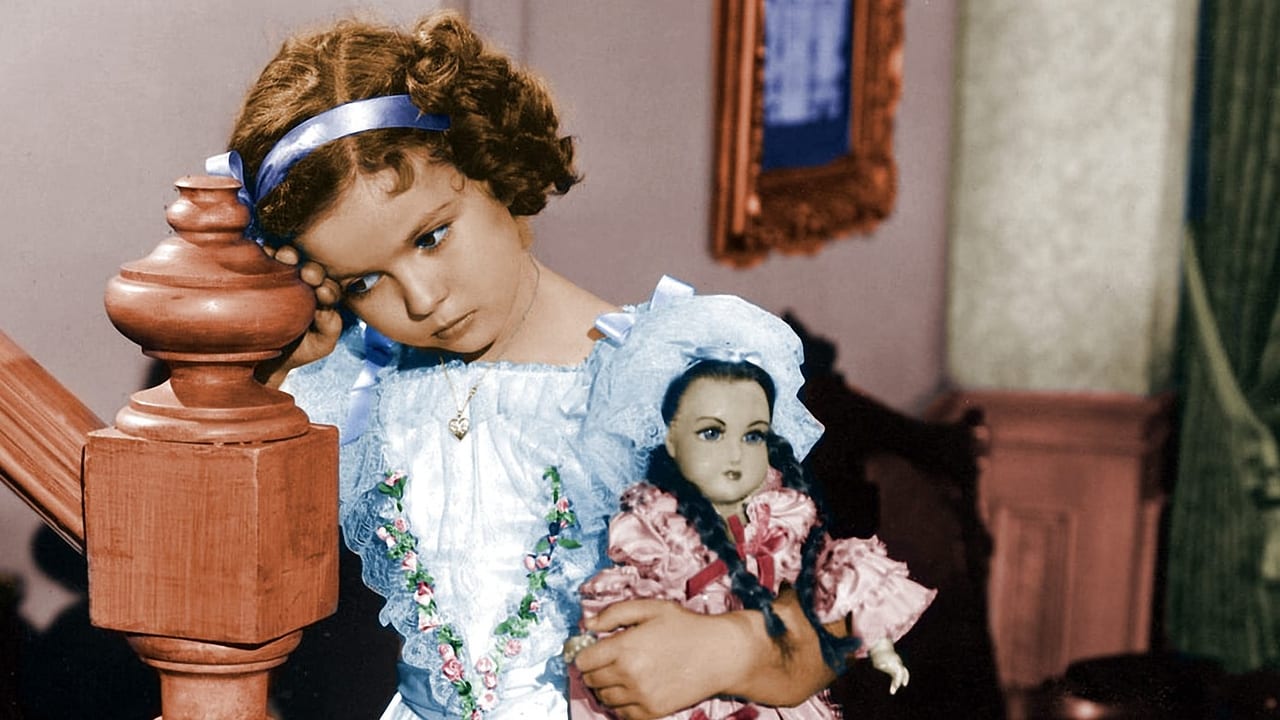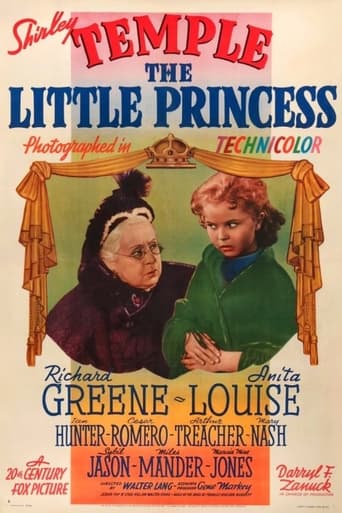

Tied for the best movie I have ever seen
... View MoreThe performances transcend the film's tropes, grounding it in characters that feel more complete than this subgenre often produces.
... View MoreIt isn't all that great, actually. Really cheesy and very predicable of how certain scenes are gonna turn play out. However, I guess that's the charm of it all, because I would consider this one of my guilty pleasures.
... View MoreThe plot isn't so bad, but the pace of storytelling is too slow which makes people bored. Certain moments are so obvious and unnecessary for the main plot. I would've fast-forwarded those moments if it was an online streaming. The ending looks like implying a sequel, not sure if this movie will get one
... View MoreThis probably has to be among the best of Shirley Temple's films, if not one of the best classic films of all time. I am a fan of Shirley's film work, and she gave one heck of a performance in this. It had little dancing in it (of course, what little was done was good), but the focus here seemed to be on her acting performance, which was always wonderful, and improved over time. The whole cast in TLP had a great chemistry, bringing their characters to life, together creating a story with which anyone can identify. The message here is timeless: never give up no matter what life throws your way. And Shirley's character Sara was determined to do just that, trying her hardest to keep a positive outlook amidst bleak circumstances.I honestly can't say how much I've watched this public domain gem, but I never get tired of it. I recommend it for all ages.And one more thing: you may need to have some facial tissue handy.
... View MoreDo we really expect movies to be "true to the book" still? We should know better by now.That said even knowing that some films can be a let down if you've already read thew book (thinking of Harry Potters 4 and 6 here among others).I haven't read the book but I think I will. Actually the 1st time I saw this film I didn't know about the book. I found out there was a book when the 1995 version came out.I've seen both versions and as I understand it they both are pretty equal in "not being true to the book".I like this one better. the other is OK but I find the frequent bouts into fantasy scenes to be distracting. Particularly since the scenes are a bit cheesy if visually interesting.I'd rather watch Shirley do a tap routine with her partner, just my preference. Besides she was such a lovable creature just watching her lightens the heart.For those looking for true to the book the 1987 version seems to be accepted as closest. I believe it was a mini series but I haven't seen it myself.
... View MoreThe Little Princess finds Shirley Temple put in an exclusive boarding school by her father Ian Hunter who is a soldier and about to be posted to the Boer War. He's also a person of some substance and the schoolmistress Mary Nash is just glad to have her seeing all those pound note signs in front of her eyes. However when Hunter is reported killed at Mafeking, Nash has not a whit of sympathy for her. She takes Shirley out of her really nice room and puts her to living in a small attic room with another girl, Sybil Jason in a similar financial predicament. Why doesn't she just throw her out altogether you may ask? Simply because it wouldn't do the school's reputation any good to throw out the child of a war hero and Nash is all about a respectable image. The woman is a true Grinch.But as it is in Shirley Temple's world, the good grownups way outnumber the bad ones and they include young lovers Richard Greene and Anita Louise, Nash's brother Arthur Treacher who is an old music hall performer though Nash doesn't like that getting out, not respectable you know. Miles Mander who is Greene's crusty, but deep down kindly grandfather and his Indian servant Cesar Romero. And finally she gets help from none other than Queen Victoria herself in the person of Beryl Mercer in setting things right.Treacher was a great deal looser in his performance than he normally is in those butler roles. As for Romero this is the second time he played an Indian in a Shirley Temple picture, the first being Wee Willie Winkie where he also befriends Shirley.But you really got to hand the film to Nash who is such a mean old thing with her exaggerated ideas about propriety and etiquette as long as you can pay for it.The Little Princess holds up very well and is still fine family entertainment for a young audience.
... View MoreBetween the ages of 7 and 10, little Shirley Temple was the biggest box office star in the world. But as she grew older, her popularity quickly began to wane. At 11 (though she believed herself to be 10 because her mother shaved a year off her age), Shirley was still quite a child when she made "The Little Princess." But because she was no longer as cute and cherubic as she was at 6, when "Stand Up and Cheer!" first made her a star, it was to be her last successful film in a children's role.As Sara (a Hebrew name meaning "princess"), Shirley plays her standard rags-to-riches storyline in reverse: Sara's wealthy widowed father loses everything in the Boer War, and her cruel boarding school headmistress Miss Minchin makes her an underfed, overworked servant girl to pay the tuition debt her father owed. Sara goes from luxurious rooms and private tutors to friendless, freezing attics as suddenly as the swinging America of the 1920s sank into the dust storms, breadlines, and squattervilles of the 1930's Great Depression. But where did poor Americans turn to briefly forget all these problems during the Great Depression? To the movies, where Shirley Temple, her unwavering hopefulness (as present in "The Little Princess" as in any of her movies), and her cute song-and-dance numbers -- with titles like "Laugh, You Son of a Gun" (1934), "You Gotta Smile to be Happy" (1936), "Be Optimistic" (1938), and "Come and Get Your Happiness" (1938) -- cheered up the entire nation. The same singing and dancing cheers up Sara Crewe while she's working as a galley slave in 1899 London, as Shirley performs "The Old Kent Road" with her pal Arthur Treacher (her four-time co-star).In short, "The Little Princess" is Shirley Temple's career in a nutshell. It is a must-see film for both longtime Shirley fans and newcomers.
... View More